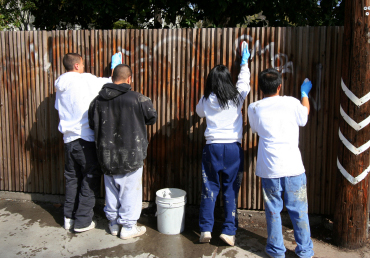Teaching Kids and Teens About Volunteering – Part 2: Introducing Them To Volunteer Work
 We all know that kids and teens have minds of their own. And as they get older, their social lives become more important to them as well. That’s why the earlier you can get a child interested in volunteering, the easier it will be to succeed.
We all know that kids and teens have minds of their own. And as they get older, their social lives become more important to them as well. That’s why the earlier you can get a child interested in volunteering, the easier it will be to succeed.
For some children, the idea of helping other people just seems to come naturally, but for others, they will need a little help to truly understand the concept. The main thing to remember is that we are dealing with kids here, not adults, so patience is key. Patience will allow them a little “space” to make decisions on their own and will also keep your stress levels at a minimum.
Take it at a nice and easy pace and, most importantly, don’t become discouraged if it takes longer than you expect. Some kids will just take more time than others, but with positive encouragement, most will begin to understand.
![]()
Step 1: Set A Good Example
One of the best ways to introduce a child to volunteering and get them truly interested, is to let them see you doing it first. Seeing a parent or mentor volunteering will generate much more interest and will allow the child to realize the value in volunteering much more easily.
A recent study from World Volunteer Web found that a youth who has a parent (or mentor) who volunteers is nearly three times more likely to volunteer on a regular basis than a child who does not have the example to follow. It is also important that they see the benefits that you are getting from your volunteering efforts, both physical and emotional. Being children, simply seeing that they can get something out of it will naturally awaken their interest.
Step 2: Take Them On A Test Drive
 Once your child senses your enthusiasm for volunteering, you can think about letting them join you in the volunteer work that you are already doing, if appropriate. Even better, make it a full family activity that you can all do together. This is the all-important first step to get them involved and build a little excitement about volunteering. After just a few times, their enthusiasm will most likely begin to grow and the momentum it will take for them to get out there on their own will begin to show itself.
Once your child senses your enthusiasm for volunteering, you can think about letting them join you in the volunteer work that you are already doing, if appropriate. Even better, make it a full family activity that you can all do together. This is the all-important first step to get them involved and build a little excitement about volunteering. After just a few times, their enthusiasm will most likely begin to grow and the momentum it will take for them to get out there on their own will begin to show itself.
Once they begin understanding the concepts involved in volunteering, find out what they like or what they are interested in, and find a volunteering opportunity that fits in well with the child’s interests. Finding something they can get excited and passionate about is the easiest way to get them truly committed. Then, find the right time and simply introduce the idea of trying out that volunteering activity. Depending on the child, they may or may not want to try it on their own at this point. If not, offer to do it together with them. You will be helping them build confidence in their abilities and it will also provide an excellent bonding activity for both of you!
Step 3: Continuous Support And Reinforcement
This is crucial and is necessary from now on. As your child gains experience and confidence in their volunteering, make sure to give them continuous support and reinforce the fact that they are helping other people who are in need. Try and get them to see their efforts from the perspective of the people they are helping. Let them know that they should feel good about what they are doing and teach them how to see and understand how their work is helping others.
Try to make your child’s volunteering a topic of common positive conversation. The more they talk about it, the more the thrill and satisfaction will reinforce their behavior.
Step 4: Make Sacrifices For Your Child’s Future
 If you remember in Part 1 of this series, we discussed the many benefits that kids and teens who volunteer have over those who don’t. These benefits are important for you to remember because there will be times when you will have to make sacrifices to keep your child involved. Even if it is something as small as taking a few minutes to drive them somewhere, or stop at the store to get them something they need for their volunteering, you will have to do these things in order for them to experience the benefits.
If you remember in Part 1 of this series, we discussed the many benefits that kids and teens who volunteer have over those who don’t. These benefits are important for you to remember because there will be times when you will have to make sacrifices to keep your child involved. Even if it is something as small as taking a few minutes to drive them somewhere, or stop at the store to get them something they need for their volunteering, you will have to do these things in order for them to experience the benefits.
It’s not just physical things either. Depending on your child’s volunteer activity, they may be opened up to a whole new world that they never knew existed. It is important to not only talk with them about their experiences, but to ask plenty of questions as well.
They’re learning life lessons, and you want to make sure that they fully understand it all.
Remember that when your child is volunteering, you will need to do your part to help them along, every step of the way. With a little support and encouragement, and maybe a bit of an initial nudge, your children can quickly become impassioned and excited about volunteering. And they will learn that they are not only helping others, but they are helping themselves as well.
The next part of this series will discuss the different types of places where children should, and shouldn’t, volunteer. Stay tuned!
Let us know what you think by leaving a comment below. We’d like to hear your experiences!
